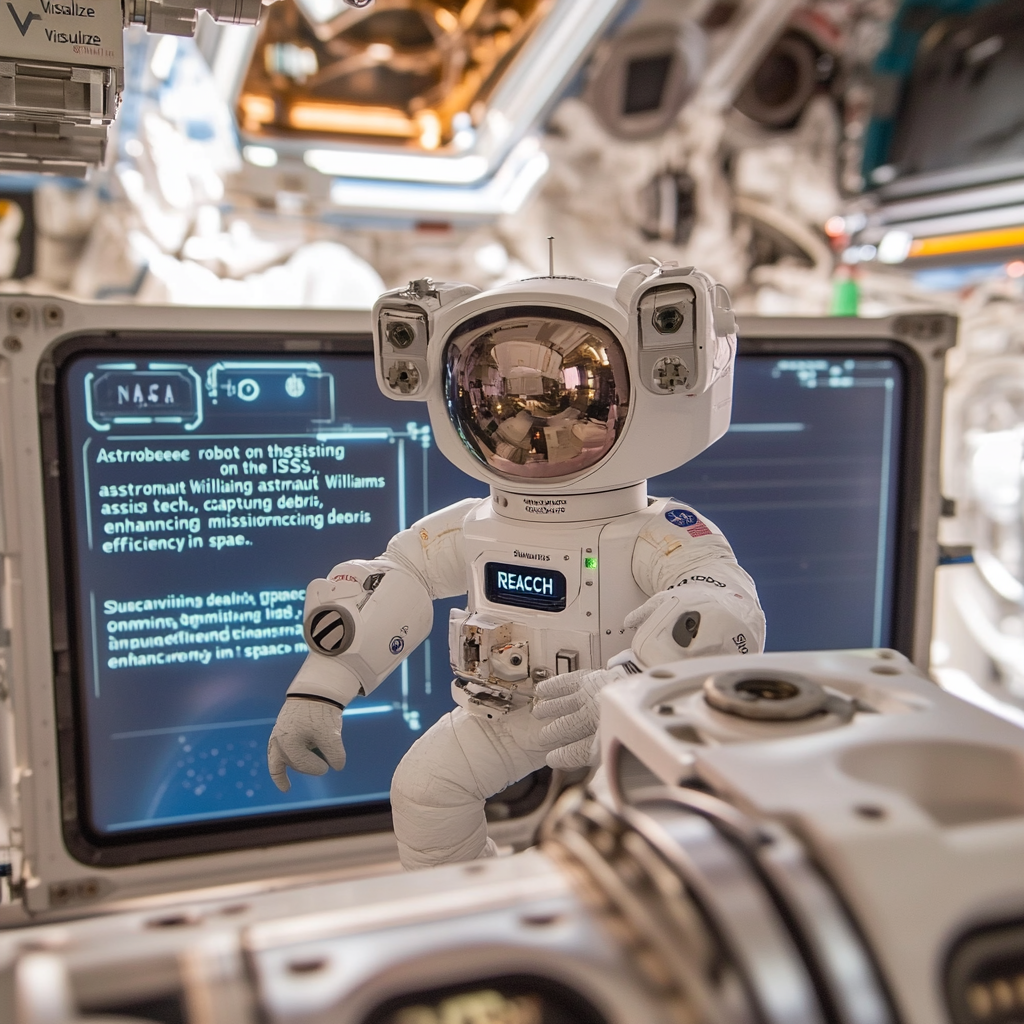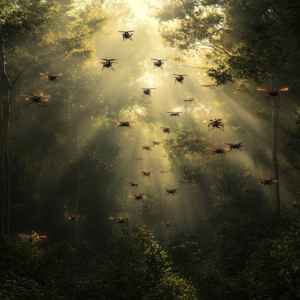
“NASA Astronaut and Astrobee: A Charming Encounter on ISS”
In the vast, unending theater of space exploration, where humanity's curiosities stretch to the stars, NASA has rolled out an awe-inspiring piece of technology: the Astrobee robot. This cheeky little cube, equipped with tentacle-like arms, has been charming its way around the International Space Station (ISS) thanks to the likes of astronaut Suni Williams. Imagine the scene: this sophisticated robotic assistant, snapping photos and lending a hand (or appendage) as Williams strikes a pose. Captured on November 15, 2024, the photograph wasn't just a whimsical moment; it served as a snapshot of the future—an interstellar dance between human and machine.
Now, you might wonder, what exactly makes the Astrobee so special? Well, hold onto your helmets, because the Astrobee is not just any run-of-the-mill contraption. It's a multi-talented robotic assistant designed to glide through the ISS, performing a plethora of tasks that would make even the most skilled intern envious. Forget about fetching coffee; the Astrobee is busy documenting experiments, taking inventory, and navigating its way through the labyrinth of the space station, all while being smart enough to recharge itself. Marvel at that, right? Autonomous robots making life easier for astronauts—this is the sort of forward-thinking we need.
Among the innovations birthed from the brain-bustling minds at NASA is a tech demo called REACCH—an acronym so catchy it almost sings. It stands for Responsive Engaging Arms for Captive Care and Handling, and yes, it sounds like something out of a sci-fi film. Picture this: these flexible arms, equipped with gecko-like adhesive pads, are designed to latch onto surfaces with the tenacity of a kid gripping their favorite toy. Their purpose? To capture wayward space objects, from satellites to debris, regardless of size or surface texture. If you think about the chaos of space junk whirling around like a cosmic junkyard, this technology could revolutionize how we clean up our orbital highways.
Let's drill into some juicy details, shall we? The Astrobee has mastered the art of being super user-friendly. It’s capable of going solo, darting around with minimal supervision, or getting some guidance from ground controllers or astronauts when needed. This versatility is its secret weapon. Whether it’s capturing inventory or conducting experiments with its eyes (a.k.a. built-in cameras), the Astrobee has got it covered. It’s practically an intern with superpowers—if only they could brew coffee!
The tests conducted, using the REACCH arms to snatch free-floating targets in microgravity, show just how serious NASA is about making space operations smoother than ever. Picture floating fragments made of various materials and surfaces, waiting to be caught. These trials don't just display the potential for cleaning up space debris; they open doors to satellite maintenance and even orbital maneuvers. The implications are massive. Each successful maneuver could extend the lifespan of delicate spacecraft, giving them a fighting chance amid the cosmic chaos.
Now, let’s not forget about the human element amidst all this robotic wizardry. Suni Williams, an astronaut with enough experience to fill a capsule, took command of the ISS in September 2024. She’s been navigating the challenges of space since June, making every day a new chapter in her adventurous saga. Originally planted for an eight-day stint, her mission extended due to Starliner spacecraft complications, reminding us all how unpredictable space travel can be. Williams and her teammate Barry “Butch” Wilmore are set to return home in February 2025 aboard the SpaceX Crew-9. Space isn’t just a workplace; it’s a thrilling ride full of unexpected plot twists.
And what does this mean for the future of space robotics? Well, every breakthrough like the Astrobee and its funky REACCH tech means we’re edging closer to a vision where robots and humans work together seamlessly. Think less time worrying over technical hitches and more focus on exploring deeper into the cosmos. With each advancement, NASA is redefining what we can achieve in space—whether it’s preparing for future missions to the Moon or setting our sights on Mars.
The sheer brilliance of this collaboration between human intelligence and robotic ingenuity offers a tantalizing glimpse into our spacefaring future. Imagine walking into a spacecraft where robots handle the menial jobs while you, the human, tackle the creative challenges. Efficiency and creativity will become best friends, all thanks to advancements in technology like the Astrobee.
But let’s not gloss over the importance of these developments in a broader context. The future of space exploration isn’t solely about pushing boundaries; it’s about sustaining them. As we stretch out our arms toward the stars, innovations that enhance safety and mission success become crucial. It's not just about reaching new worlds; it’s about how we care for the things we send out there and the humans we send along with them. The Astrobee isn’t just a robotic marvel; it’s a symbol of a future where humanity can explore, innovate, and preserve.
So, as we stand on the precipice of this new frontier, let’s tip our hats to the Astrobee and its many talents. They remind us that the journey to the stars is not just a solitary endeavor but one of collaboration—of daring to dream big, inventing the unimaginable, and working hand-in-hand with technology that makes our lofty goals ever more achievable.
Want to stay up to date with the latest news on neural networks and automation? Subscribe to our Telegram channel: @channel_neirotoken.

